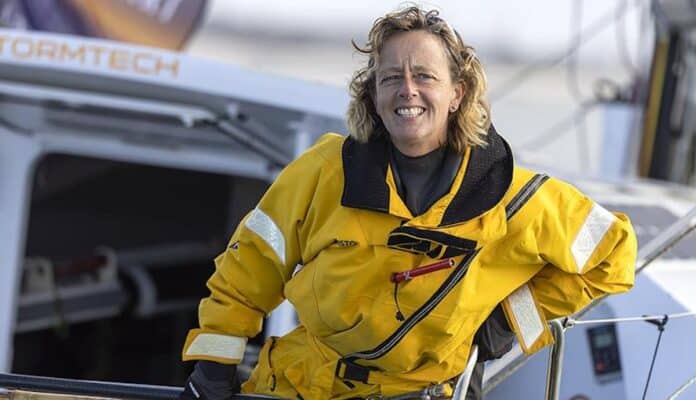Canadian composites inspection and engineering firm UTComp has carried out its first mechanical integrity inspection of a Class 40 racing yacht.
UTComp was chosen by skipper Melodie Schaffer to carry out a nondestructive assessment of the mast and spars of the yacht Whiskey Jack.
“Melodie approached us to see if we could nondestructively test the carbon fiber mast, boom and bowsprit of Whiskey Jack, her Class 40 offshore racing sailboat,” explained Jo Anne Watton, CEO of UTComp.
“We were excited to provide this support — this project was a first for us.”
UTComp points out that fiberglass sailing masts and booms experience tremendous stresses and strains, especially on open water, including compression from rigging tension, bending from sail loads and local stresses at the gooseneck, which connects the boom to the mast.
Mast step
In addition, there is compression and force at the mast step, where the base of the mast is secured to the deck or keel of the boat.
Melodie is currently preparing the vessel for the second edition of the Globe40 round the world sailing race with co-skipper Jeff Engholm.
The first leg in the eight-month, 30,000 nautical-mile event is due to start from Cadiz, Spain, in September.
It will be Melodie’s second attempt at the gruelling and challenging double-handed race in which the crew of two will manage all aspects of sailing, from navigation and sail handling to cooking and cleaning.
Ultrasonic inspection offers several key advantages over other nondestructive methods for assessing the condition of composite marine equipment, says UTComp.
Ultrasound can be used to measure the thickness of the mast wall and identify voids, porosity, inclusions in the laminate and other defects or flaws in the material.
In its basic form, a mast is simply a beam and our engineers are well trained to analyse and assess beams.
Geoff Clarkson
These could be caused by manufacturing defects or damage from corrosion and mechanical stresses, can result in failures.
The evaluation involved analysing the ultrasound data using UTComp’s proprietary algorithm.
“In its basic form, a mast is simply a beam and our engineers are well trained to analyse and assess beams,” said Geoff Clarkson of UTComp.
“We checked every location where forces were applied to the mast to measure the effect of the forces on the polymer that holds the carbon fibers in place.
“We did not have details of the carbon fiber orientation and layup so we used a conservative approach that has been developed for Fitness for Service assessments of pressure vessels.”




